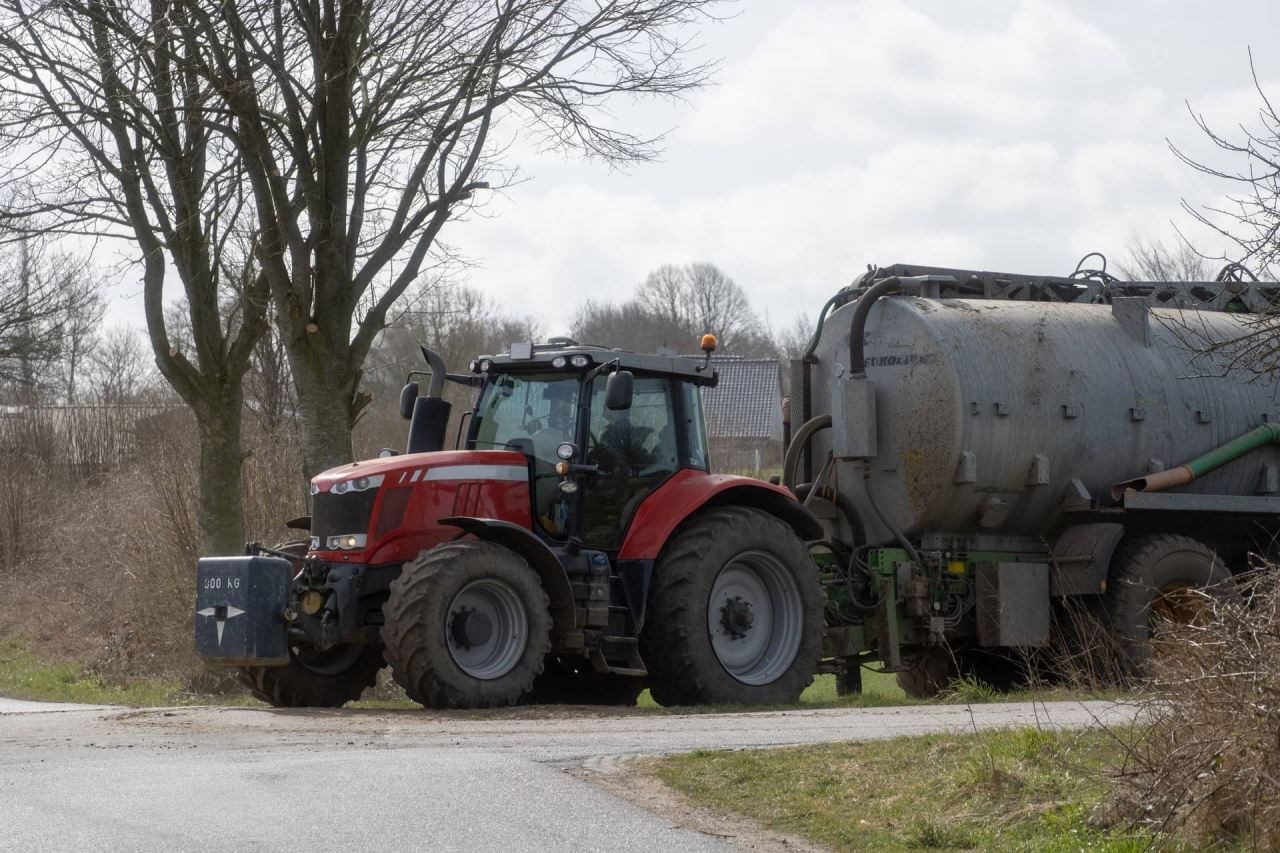To Spread or not to Spread, that is the Question!!!!
With reports of ammonium nitrate potentially reaching the dizzying heights of £1,000/tonne, farmers are quite rightly questioning the amount of fertiliser to use this season.
For cereals and oilseed crops the answer is relatively easy, as there is a Nitrogen Adjustment Calculator available on the Agriculture and Horticulture Development Board (AHDB) website, where you put in the price of your nitrogen product, the price you expect to receive for your crop, and it automatically calculates by how much you should reduce the normal RB209 recommended nitrogen rate accordingly.
Here at Douglas Green Consulting, our independent farming consultants in the UK, have been using this tool now for several weeks estimating what the fertiliser price would be, and then getting a surprise and having to recalculate it again!!. Most recommendation rates so far have been around 40-60kgN/ha lower than normal levels for winter wheat.
However, for grassland it is not quite as simple as this because it is not just about producing a crop, but about whether you can sustain livestock numbers on your farm and whether by reducing fertiliser rates you will end up buying in more food (if available) and at what cost!
None of us have a crystal ball to see what will happen this year, but decisions need to be made with the information available, so we thought it would be helpful to give you our take on it.
Our farming clients fall into 2 main categories, mostly in the latter:
I’ve bought all my fertiliser requirements for this year!
If you are in this category, then well done. Your leap of faith early on has certainly paid off this year, and as long as product is on your farm you can continue farming as normal and save reading further – unless you see potential in squeezing more out of your system and selling some fertiliser for a profit.
I’ve bought some fertiliser, but not all my requirements for this year!
Most clients fit into this category and therefore questions are being raised as to whether and how existing purchases can be eeked out to cover the season without having to buy later at such high prices (or which may not be available).
We must remember that without fertiliser grass will not grow as much and the last thing you should do is to run out of forage as purchasing in replacement feed is likely to be expensive or not available.
Each farm’s circumstances will be different, but these are the things to consider:
Don’t miss out on spring growth
Grass grows and responds to nitrogen best in the spring.
It is important to maximise your first cut yields and spring grazing production, so don’t skimp on the nitrogen rates for these.
Make the most of your manures
Target manure applications to where there is most potential to save of nitrogen applications.
An application of 30t/ha slurry on each cut of silage is better utilisation than maximising the manure on the maize land in order to get rid of it.
But make sure you consider the practicalities of storage capacity.
Take full account of the nutrients in your slurry
If you are not already doing it, make full allowance for the nutrients provided in the slurry. An application of 30t/ha slurry in March will provide approximately 25 kg N so make sure you reduce your fertiliser rate accordingly.
If your soil phosphate indices are 4 or above you are not allowed to apply manure to those fields due to accumulating phosphate levels. If the soil index is at 3 you can only apply enough manure to balance the phosphate offtake – talk to us if you need guidance.
Consider how you spread your manures
The way you spread your manures will affect how much of the nitrogen in them will be utilised by the grass. As a general rule of thumb, band spreading your slurry will increase the utilisation of nitrogen by a further 5% compared with spreading normally. Shallow injection increases it by 10%.
Get the basics right for grass growth
The optimum pH for grassland to grow on mineral soils is pH 6.0. Below pH 5.8 grass growth becomes restricted. Similarly, phosphate and potash indices should be above 2 for maximum growth. Restricting phosphate, particularly in spring, can have a dramatic effect on growth response if there is a crop need. So, check your recent soil tests and know which fields are less likely to respond to nitrogen this year. These are ones to target pulling back nitrogen rates on if you have to.
If you have limited supplies of sulphur based fertiliser then target their use for spring dressings for cutting grass and cereal crops as these are most likely to respond. If there is surplus left over then target its use on the fields which will be cut the most often during the season. As well as nutrients, also consider soil structure and risk of drought/wetness when making decisions about timing of fertiliser applications this year. It will be far too expensive to put it on if weather, ground and growing conditions are not ideal.
And don’t forget sward composition. Swards rich in ryegrasses will give you a better response to nitrogen than those which have a higher proportion of non ryegrass species. And swards which have a higher percentage of clover won’t need as much/any nitrogen applied.
This will be a good year to walk your swards in May and look at sward quality and clover content in order to make decisions about nitrogen applications from June onwards.
And remember recently reseeded fields are likely to respond better to nitrogen so if you are going to cut back on nitrogen these should be the last fields to consider.
Utilise grass well to get the most from it
There has never been a more important year to make sure that you utilise the grass produced well.
Rotational grazing is by far the best way to make sure that you utilise your grazing grass well. Grazing the sward down tight followed by an application of slurry/dirty water/fertiliser (or combination) will give you the best chance of a good crop to come back to 3 weeks later.
If you are making silage, decide how many cuts you are doing and maximise yield on each as much as you can – the contractor charge is generally the same if it is an 17t/ha or 12t/ha crop.
Don’t delay cutting for your milking cow silage in order to allow the crop to bulk up – you will only end up paying more on concentrates.
Third and fourth cut crops are the least likely to respond to nitrogen. So, check if you really need them, and if you do, consider an application of slurry rather than artificial fertiliser. But if you are in an NVZ area, make sure you do not exceed your 250kgN/ha from organic manures limit.
Fine tune your Forage Management
This will be the year to fine tune your forage management requirements. Every milking cow in the herd eats a similar amount of forage. If forage is going to be tight due to easing back on fertiliser rates, then you need to seriously consider marginal cows in your herd, and at what yield cull cows leave the herd.
Forage cost per head will be higher this year, so getting rid of cows that don’t have a long term future in your herd may be better done sooner rather than later. We are developing some software which will help you do this for the coming months.
Do you already have a high stocking rate?
If you already have a stocking rate of 2 LSU/ha or over, do not have access to more land for forage production, and don’t have forage stocks over from last year, then you have little wiggle room for reducing fertiliser rates at all.
However, if there is an option to rent some extra land in the area there may be scope to push your better swards harder for silage, graze the youngstock on poorer swards at a lower stocking rate with less fertiliser. But it depends how much rent you have to pay relative to the fertiliser savings you would make.
The economics of silage making in 2022
We have done some calculations on the cost of a 3 cut silage system based on the fertiliser price from March last year, and for the coming year at 2 nitrogen prices as follows:
| 2021 Nitrogen at £285/t | 2022 Nitrogen at £645/t | 2022 Nitrogen at £1,000/t | |
| Price per Tonne Dry Matter | 116 | 155 | 180 |
The cost of nitrogen is only one part of the overall cost of making grass silage, but the impact of the nitrogen price is still significant. However, if you were to cut back nitrogen dramatically, and then have to purchase in forage extenders over the winter to compensate for lack of forage, it would be difficult to replace on a similar cost per tonne of dry matter basis.
So, our message is, yes look at all options to minimise your nitrogen applications, maximise your slurry utilisation, and make the best use of the forages that you grow, but don’t go too mad and leave yourselves without enough forage for the winter.
If you require any advice/help or are worried about the cost of fertiliser for farms and need business advice, please call our farm business consultants today on 01666 817 278.




